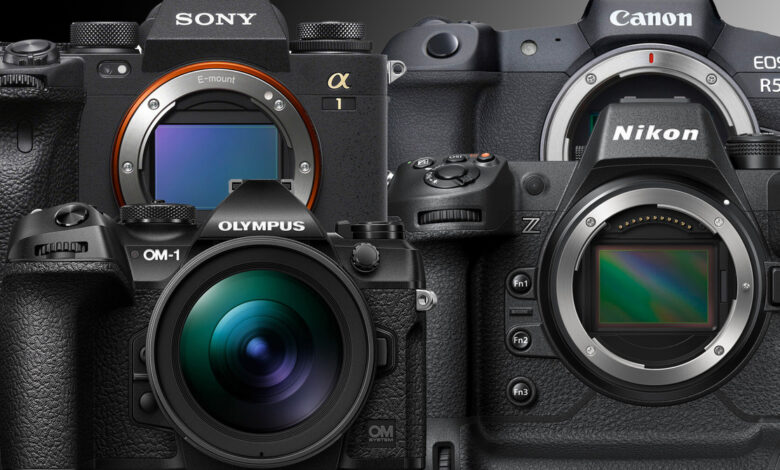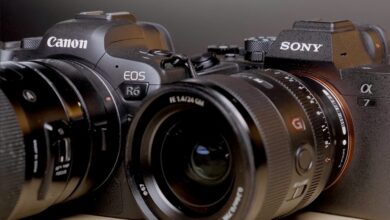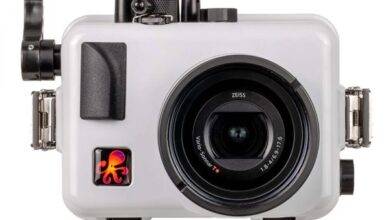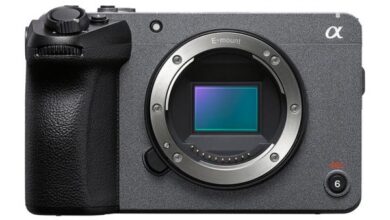Why Do You Think Swapping Camera Brands a Pointless Exercise? Why I Did It.

Is swapping a camera system a valid and worthwhile move? I did it for very good reasons, and it’s something you might consider if you analyze what you use and why you bought it.
Something I regularly repeat is that all camera manufacturers make good cameras. There’s probably nothing at all wrong with the camera you have. However, speaking recently with users of three of the biggest brands, two told me theirs has major build quality issues, another said his camera suffers from slow focusing (something that’s also been mentioned in the comments on my articles), and the other has unreasonably expensive lenses. I’ll let you work out which brand is which. Although none wanted to admit it at first, during conversation those photographers said they were a little disappointed with the gear choices they had made. What made them choose what they did?

Understanding What Influences Your Choices
If you are reading this, then I assume you have already bought into a system. You are happy with it, no doubt, as it takes excellent photos in your hands. But have you ever thought about what first persuaded you to buy that brand in the first place?
Nobody admits to being swayed by advertising. Nevertheless, advertising is like a “Jedi mind trick,” and that is why almost everybody is influenced by what advertisers tell us. I can hear you screaming that you are not, which is why I added the get-out clause “almost everybody” so as not to upset you. Nevertheless, in truth, everyone thinks the same about themselves. Advertising is powerful, which is why those major brands invest so much money in it.
This is bad news because the biggest brands will have the biggest advertising budgets, and consequently have greater persuasive powers over us. Consequently, it’s easy to maintain their position as the biggest fish in the sea because they have the strongest powers of persuasion.

Are You Susceptible to the Law of Conformity?
There’s a subtler way those big brands influence photographers, too. Most people have a desire to be part of a team. It’s human nature to want to fit in, and when they see every second photographer shooting with a particular brand camera, they are likely to want to have the same. It doesn’t matter if that brand’s cameras are lacking in some way; it’s being part of the flock that matters. Consequently, the choice of camera that most people make has little to do with whether it is the best camera for them but because they want to be associated with others who own the same gear and wear the same badge.
This complying with the pressure of majority influence is called the Law of Conformity. If you hang out with nine other people who own a particular camera brand, you’ll become the tenth or leave the group. Most people will agree to buy products or services that are perceived as acceptable by the majority.

That doesn’t just happen in photography, of course. Think of the popularity of certain sneakers and clothing manufacturers that run sweatshops in Asia, or burger bars that feed us with harmful ultra-processed foods and drinks with little nutritional value. A large part of their financial success is due to their existing popularity.
Having a personality that enjoys conformity isn’t great news for creativity in photography. If you consider all the great photographers of the past, they have all broken away from the ordinary. David Bailey used 35mm film instead of the bigger formats that were the norm, and Dorothea Lange broke the mold and photographed the hardships of the Depression era. Here in the UK, Tish Murtha brought similar social issues to light nationally by photographing marginalized communities in Newcastle upon Tyne. They all broke away from the conventions of their times. Most great photographers of the past thought outside the constraints of what was considered normal.
If a photographer’s camera choice is made because it conforms to the expectations of the wider photographic community, then their creative outlook may be similarly restricted.
The big problem here is that nobody can recognize that they are being influenced to make a particular decision, or at least they won’t admit to it.

The Pressures of Internet Giants
Giant internet businesses, through which so many of us like to share our photos, magnify the Rule of Conformity. All platforms want engagement because it earns them advertising revenue. Therefore, search engines and social media will push posts into your feed that cohere with what you want to see. Their revenue relies on you clicking and tapping on links, and you will click more on stuff that interests you and coheres with your belief structure. You will then see the paid advertising that is relevant to your interests and, thus, the internet giants get richer.
Therefore, photographers will see ever more work from the brands that they engage with.
You can experiment with this. Pick a brand you don’t shoot with and a country where you don’t live. For example, if you are a Sony, Canon or Nikon portrait photographer in the USA, your online feeds are likely to be dominated by similar photographers. So, choose another brand from yours. For example, if you want to try the brand I use (OM System), interact with some of the posts from photographers who use that system in another country and of a different genre from you. For instance, if you choose OM System and the UK, you could interact with macro photographers Geraint Radford and Jamie Rosencrans, wildlife photographers Tesni Ward, Rob Cottle, Espen Helland, Nick Wilcox Brown, and David Tipling, Landscape photographers Tom Ormerod, Derek Forss, and Andrew Fusek Peters (who also shoots wildlife), and architectural photographer Martina Govindraj.

Search for them using Google or follow and interact with enough of their posts. Sure enough, you will soon start to see more OM System photographers in the UK that shoot that genre appearing in your various feeds that were previously filtered out. You can, of course, choose a different brand and country if you prefer, but the principle is the same.
This screening and manipulation of our social media and search engine feeds have a darker side beyond showing us the camera brands we are interested in. Like those businesses selling clothing made by slaves, internet giants have no interest in preventing the harm they do. The same algorithms that show you more about certain camera brands will filter out people who disagree with you politically. Therefore, you will only see people who agree with your point of view. Consequently, you may get a false feeling of being part of a majority, and that will generate ire if, say, your favored party loses an election.
It’s widely accepted that divisions in Western societies are getting broader and social media is feeding it. This is even evident in some of the outraged comments we see in photography forums. It’s something we should be aware of.

Celebrating Minority Influence
There is the opposite of majority influence, and that is minority influence. In the broader society, that is where small groups can bring about change. Again, this can work for bad and for good. Look how the rise of extremism in recent years with abhorrent racism entering mainstream politics. That is the result of minority influence. On the other hand, environmental awareness and protection have been fought for by small groups, and they have changed the way society thinks.
When I was young, whale hunting was the norm, and the people driving the Save the Whale campaign were considered weirdos by the mainstream media. But thanks to the way a small group acted, our values changed. Now, in most countries, whale hunting is considered detestable and backward. That change didn’t happen without a fight. These days it’s the battle against climate change and environmental destruction that’s being driven by minority influence, and it still meets similar resistance, although that, like whaling, is crumbling away.
In photography, smaller camera companies are making a resurgence because of minority influence. Just like societal change, it’s also evident that as this happens, there is a certain amount of kickback by a gatekeeping majority.

A Barrier to Change: My Lenses Won’t Fit
One barrier to change is that camera systems are inflexible. Therefore, it is hard to change one component without changing everything, and that can be an expensive exercise. Manufacturers only standardize their products when not doing so will hurt their sales. For example, Sony once had a non-standard size hot shoe but subsequently changed that design.
Furthermore, any cameras with the same-sized or very similar-sized sensors combined with lenses of the same focal length, and in any one price bracket, will give much the same photographic results as another. So, what’s the point of changing? In answer, similar cameras from different brands will take similar pictures, but not every camera has identical functionality. Those brand-unique features are inspiring and will lead you to experiment in ways you hadn’t thought possible before.
Of course, the results from a different-sized sensor will have more potential for giving different results from what you have now.

New Cameras Are Motivating
There’s little purpose in doing photography if you don’t enjoy it to its fullest. New camera equipment is exciting to own and it can remotivate you. Although a different camera won’t instantly improve our photography, it is inspiring to try out different gear and learn what it can do. This enjoyment is greater still when you change brands; there is a whole load of new nomenclature, menus, button positions, and brand-unique features to discover.

Is Big Best or Is Small Beautiful?
With the vast improvements in sensor and processing technology, photographers have become wise to the old lie that bigger camera systems are necessarily best. Therefore, size and weight are features that might sway you to change, too.
As the general population gets older, hauling enormous and heavy cameras and lenses around becomes a less attractive prospect. Older photographers don’t want to be hindered by a mammoth chunk of metal, plastic, and glass that may, in the long term, cause arthritis in the neck joints. So, smaller, lighter systems may be a good reason to change. Especially so now as the image quality of smaller systems has vastly improved over the last couple of years.
Reduced size and weight appeal to the younger generations as well. A small, lightweight camera that can be slipped into a coat pocket or handbag is far more appealing to young lifestyle photographers who don’t want to carry a huge, ugly lump of a camera with them but need better image quality than is possible with their phone. Similarly, those who enjoy adventurous outdoor activities may want to swap as less weight is all-important when hiking up a hill or packing a canoe.

New Cameras Are Bad for the Environment
As for the environmental impact of the camera, it’s an uncomfortable fact that camera manufacturing produces toxins that pollute. It also requires mineral quarrying and produces greenhouse gases. However, if you buy a new, better-quality camera system, you can offset some of your impact by selling your old gear, which will be bought by someone who would otherwise have bought a cheap camera with a short lifespan.
In my gear reviews, I now include how much single-use plastic the gear comes wrapped in. There used to be lots, but this is gradually reducing. Nevertheless, we should all pressure our manufacturers to reduce their environmental impact. Before you buy your next camera, write to the manufacturer and ask them how much CO2 they produce, how many pollutants they dump into the air, rivers, and seas, and how much plastic wrapping is in their box.

Do I Practice What I Preach?
Yes! Although I am now an OM System user, I haven’t always been. I have dabbled in other brands and been disappointed enough to change back to what was then Olympus because others lacked the functionality I took for granted. Am I likely to change again? In time, I might add to what I have and buy a medium format camera because that will produce a much bigger difference in my images than would going back to a 35mm sensor, where the difference is small. However, I am about to move house and my wife would probably divorce or murder me if I bought a medium format camera now.
But those are my reasons for my choices and no reflection on what you do, own, or should change to. I am sure someone keen on film emulations might choose a Fujifilm, or someone with lots of spare cash who is inspired by the minimalist designs of a Leica will give those a try.

In Conclusion
If you want to buck the influence of the majority, show you are not swayed by the powerful advertising of the biggest businesses, and experience the joy of trying something different, if you are looking for motivation, then consider looking at a system very different from what you use now. Far from being a pointless exercise, swapping brands can be a source of inspiration. Saying that, none of those disappointed photographers I mentioned at the start changed to another manufacturer. The Law of Conformity is clearly very powerful.




